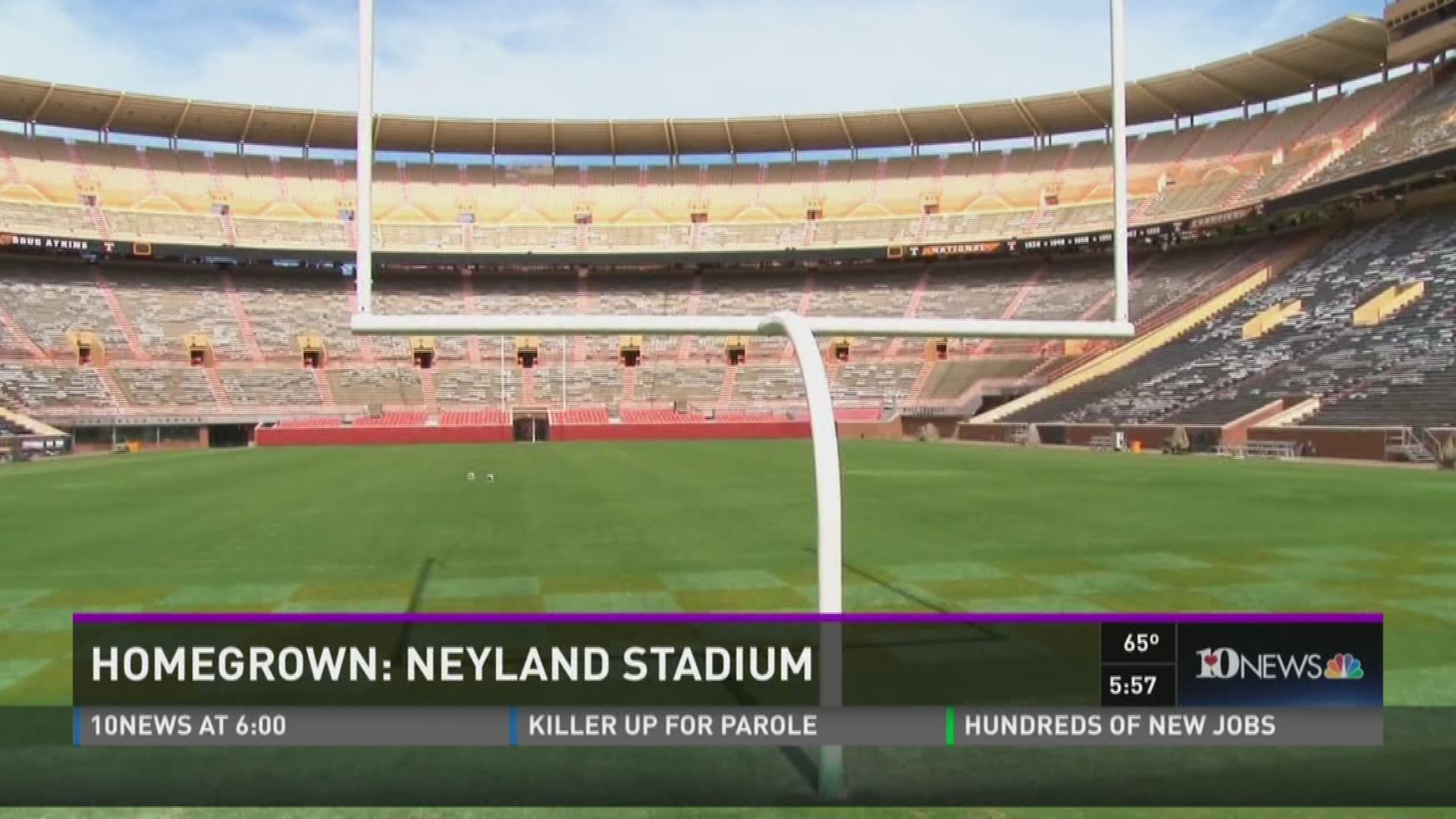(WBIR - KNOXVILLE) Fan or foe, it's hard not to marvel at Neyland Stadium.
The 93-year-old venue bears the name and the legacy of the most legendary coach to wear orange, Gen. Robert Neyland.
Neyland Stadium's storied past is full of legend and lore.
Whether a record sellout or a quiet off day, Neyland Stadium is one of the most intimidating in college football.
"There's no bad seats in this stadium," said Gus Manning, a stable in the UT Athletics Department. "This place keeps the sound in here. There's no place for it to go."
Perched alongside the Tennessee River, its storied past is full of legend and lore.
"This is a great old house."
But to truly appreciate the house that General Robert Neyland built, you have to visit the stadium's humble beginnings.
In 1921, the gridiron began as Shields Watkins field. Its namesake- W.S. Shields who purchased the land and his wife, Alice Watkins-Shields. Then, just 17 rows of bleachers stood on the West Side.
"Then, in 1926, they came over here on the East side and added 17 rows."
That year General Neyland was named head coach.
"He was so smart it was unbelievable."
And, the General was a true visionary. During his 36-year reign as head coach and then Athletics Director, the stadium's capacity grew from 3,200 seats to more than 51,000.
"A lot of changes over the years here."
And, Gus Manning has witnessed most of them.
"My office used to be back there in South stadium."
During World War II, General Neyland returned to the service.
"When he came back, they extended this South end zone here. And, we had all the veterans from World War II that needed housing, so it also provided the housing."
The General successfully battled opponents on and off the field. Neyland actually used "the shotgun" to tackle a pigeon problem in the East stands.
"Well, everybody brought their shotguns in and we started shooting. We didn't know they were having a ceremony for graduation here on the field. It sounded like WW3 started up. It was something else, but we got rid of the pigeons.
Unfortunately, the General didn't live to see the completion of the upper deck or the design he engineered for a hundred thousand fans.
"He died in March of 1962- March 28th."
A decade later, Dr. Bill Bass started the Graduate Anthropology Department in the East stadium.
"There were bats in the hall when we moved out here because it had been empty for a while," Dr. Bass said.
For years, his office was the old residence hall advisor's suite. And, the old athletic dorm lounge? It's now home to thousands of skeletons.
"The donated collection is the largest in the US of modern skeletal remains."
So, there is some truth to this scene in the blockbuster, "Blindside."
"So while it's fine and dandy to have 100,000 fans cheering for you, the bodies that you should be worried about are right under the turf."
"The only hokey part of that is the hand reaching out of the field," says Dr. Bass. "As far as I know, there are no burials under the field."
Just the stands.
"People don't realize it, but when they sit in their seats in Neyland stadium, there are roughly 7,000 skeletons sitting under them," laughs Dr. Bass.
Over the years, Neyland Stadium has played witness to historic events from the Billy Graham crusade in 1970 to Michael Jackson and the Jackson 5's Victory Tour in 1984.
"He had to go in and decorate the dressing room," says Manning, remembering Jackson's visit to Neyland. "They brought him in here in an armored car. He stayed at the Hilton at the airport."
Seventeen renovations and expansions complete with luxury boxes, the old stadium has come a long way! What would General Neyland think if he saw it today?
"Oh, he'd love it," says Manning.
Neyland Stadium. HomeGrown in Tennessee.

